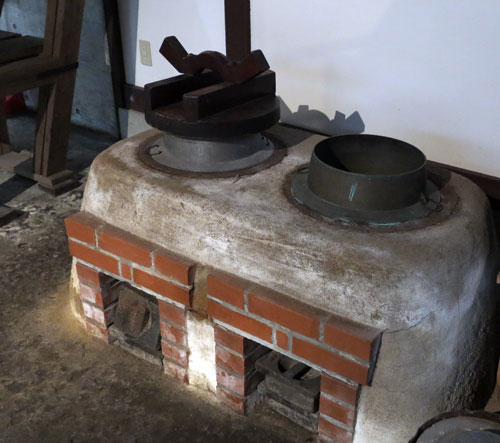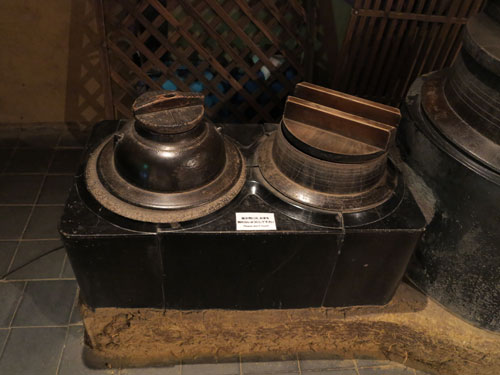Kamado Stove & Japanese Cooking
During the Edo Period (1603-1867) of Japanese history, wealthy merchants and rich samurai began to eat a kaiseki style of Japanese food cooked on a kamado stove. This cuisine was based on white rice plus side dishes such as miso soup, tsukemono pickles, fried fish and tofu served with sake where appropriate.
Kamado Stove & Japanese Cooking かまど
During the Edo Period (1603-1867) of Japanese history, wealthy merchants and rich samurai began to eat a kaiseki style of Japanese food cooked on a kamado stove. This type of cuisine was based around polished white rice served with a number of side dishes, such as miso soup, tsukemono pickles, fried fish and tofu, served with sake (nihonshu) where appropriate. This was the beginning of what can now be seen as classic Japanese cuisine.
Large Stoves Necessary for Full Course Japanese Cuisine
To facilitate cooking rice and a number of other dishes at the same time a large stove was necessary and the charcoal-burning kamado developed in the kitchens of tea houses and the homes of the wealthy, both merchants and samurai. The example, pictured above, is from the Sumiya Montenashi Museum (a former teahouse) in Shimabara, Kyoto. Early kamado were made of clay before ceramic stoves were introduced.
Japanese ceramic dishes developed
As an adjunct to the development of a multi-course Japanese cuisine many different ceramic dishes, sake flasks and lacquer ware bowls and trays were needed to serve the food. These were mass produced in such pottery making towns as Tajimi, Seto and Tokoname in the Chubu area of central Japan.
Furthermore, associated pottery and lacquer ware crafts also developed to meet demand throughout the Edo era and were to reach a high standard of craftsmanship and style.
 Stove from Tanegashima Island in Kagoshima
Stove from Tanegashima Island in Kagoshima











